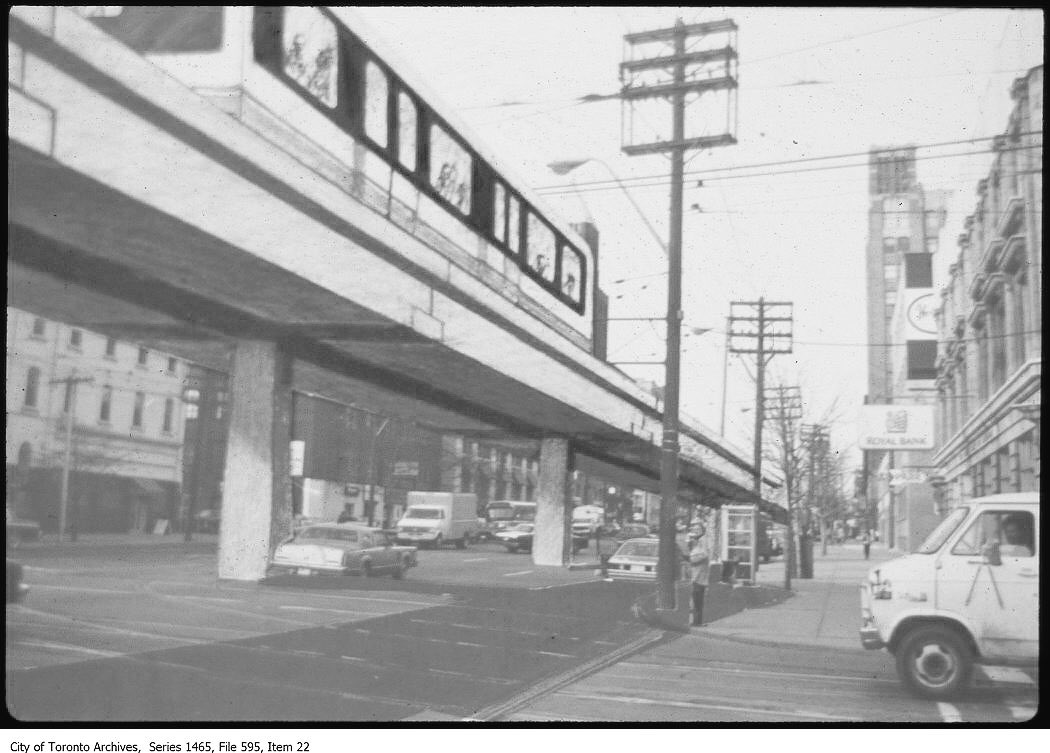TheTigerMaster
Superstar
It just occurred to me that an elevated ICTS rapid transit line was “planned” for Spadina Avenue in the 70s or 80s. So that’s not quite a crazy idea after all
And I say “planned” in dramatic quotes, because so far as I’ve seen, it never went beyond the concept stage. But it was a proposal at the time from Queens Park.
I think they just viewed Spadina as yet another place to market ICTS.
Here is an image of the proposal, posted by Laurence Lui on Twitter. This image is literally the one and only piece information about the proposal I can find online. Might have to visit the Toronto Archives to find more information about it. To think there was a time where absolutely everything wasn't uploaded to the information superhighway...

Personally, I don't think I would've supported this, based on aesthetic reasons alone. This render minimizes the visual impact of the proposal, and even here nothing looks pleasant about it. But if it were built underground, it would have been a fantastic addition to the network. The line could've been shallow and cut-and-cover to minimize costs.
This line would've certainly moved significantly more people than the SRT or Sheppard Subway, since the 510 Spadina already matches those lines for ridership. All-day ridership might even have been comparable to the Eglinton Crosstown, as western Downtown continued to develop in the new millennia.
Steve Munro on the proposal:
A similar system was also proposed for Hamilton: http://www.trainweb.org/hamtransithist/ICTS.html
Attachments
Last edited:
